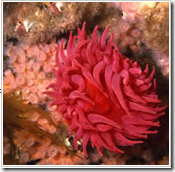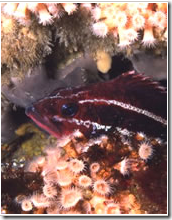22 Apr 2008
 After many years working with partners on the conservation of Bowie Seamount in the northeast Pacific, WWF-Canada celebrated the official designation of the site as a Marine Protected Area (MPA) on April 17. This is an example of how collaboration between governments, First Nations, communities, resource users and environmental organizations can lead to significant conservation gains.
After many years working with partners on the conservation of Bowie Seamount in the northeast Pacific, WWF-Canada celebrated the official designation of the site as a Marine Protected Area (MPA) on April 17. This is an example of how collaboration between governments, First Nations, communities, resource users and environmental organizations can lead to significant conservation gains.
Bowie Seamount, located 180 kilometres west of Haida Gwaii (Queen Charlotte Islands) off the coast of British Columbia, is one of the few seamounts in the world that is completely within a country's jurisdiction, giving Canada a unique opportunity to protect it.
Seamounts are rich, marine treasures that are particularly vulnerable to over exploitation. Yet, seamounts are under represented in global sets of Marine Protected Areas as most are outside territorial waters.
“Bowie Seamount is an oceanic oasis in the deep sea, a rare and ecologically rich marine area, and our government is proud to take action to ensure it is protected,” said Gary Lunn, Canda's Minister of Natural Resources. “By working in partnership with the Council of the Haida Nation and groups like WWF-Canada, we are ensuring this unique treasure is preserved for future generations.”
 A network of MPAs on the Pacific Coast is a vital part of an integrated approach to caring for our oceans and building a sustainable future for our marine resources, and the communities that depend on them.
A network of MPAs on the Pacific Coast is a vital part of an integrated approach to caring for our oceans and building a sustainable future for our marine resources, and the communities that depend on them.
“For many years, WWF-Canada has been working with partners to protect this unique seamount chain,” said Michele Patterson, Director of the Pacific Conservation Program for WWF-Canada. “The designation of the Bowie Seamount Marine Protected Area is an excellent example of how conservation can be achieved by Federal and First Nations governments, resource users, and environmental organizations working together to protect important marine habitats both for today, and for our children tomorrow. We look forward to many more of these conservation successes in Canada.”
The Haida have long recognized this area as a special place and named it Sgaan Kinghlas, meaning Supernatural Being Looking Outward. The new MPA will protect a complex of three offshore seamounts – Bowie, Hodgkins and Davidson Seamounts.
Bowie Seamount is one of the most biologically rich seamounts in the Northeast Pacific, due to unique oceanographic conditions that support an abundance of microscopic plants and animals, which, in turn,have contributed to Bowie’s diverse, complex ecosystem. It is fragile and vulnerable, however, and protecting it will contribute to its continued survival and that of its marine community.
Fisheries and Oceans Canada will work together with the Haida Nation, WWF-Canada, community groups and an advisory team, including the province, to effectively manage Bowie Seamount under Canada’s Federal Marine Protected Areas Strategy, and preserve the health of Canada’s oceans and marine environment.
For media inquiries, please contact:
Melissa Tupper
Communications Specialist
WWF-Canada
Direct: (604) 694-6652
Mobile: (778) 835-2966
mtupper@wwfcanada.org









